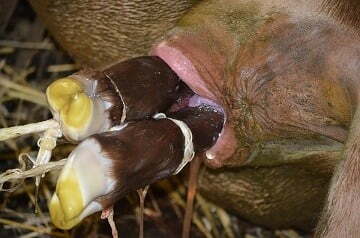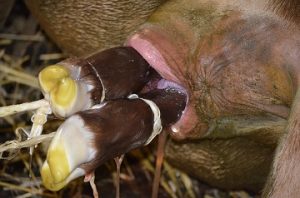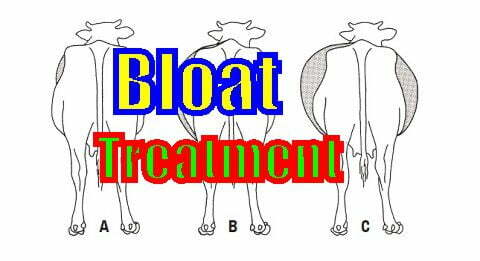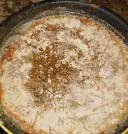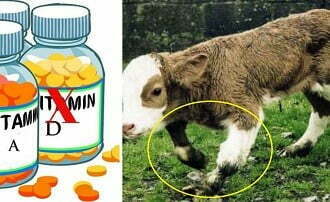How to take care of calves so that they grow faster is not a stand-alone process. This process is closely related and determined by the previous processes involved.
For example, what is the genetic makeup of a cow? What gender? The location? How is the treatment?
Note, the part of care is at the end because the most determining factor is genetics.
Although genetic quality only contributes 30%, good calf care can optimize its potential.
For example, with the same care, the calf of the Ongole cross will be different from limousine or simental.
For the maximum quality of calves to appear, 70% is influenced by the environment. Such as feed, cage, and health.
If only with good care we can do all of that, we didn’t need to research to improve the genetic quality of animals from the beginning.
Now, we just agree that the growth of a calf is largely determined by the genetic quality of the broodstock.
This means that we must first recognize the capacities and abilities of our calves.
So that the expectations are not too high. Later, we can be disappointed.
Take it easy. There are ways so that our calves can grow faster than our neighbors’ calves. This stage is only a matter of technical maintenance and management.
As long as the resources are available, it’s easy to do.
But we have to slow down and understand a lot of things so that understanding becomes more complete.
These stages can be useful in assisting the planning of breeding animals. So that the calves produced are of very good quality.
What effect does calf genetics have?
The effect, in addition to genetic potential, is also on birth weight. Besides, body measurements such as chest circumference, head, and body length also vary.
This depends on the type of male and the size of the female.
The logic is like this.
Cows whose weight and body size are greater, need a greater amount of feed. By being able to eat more feed, growth can be faster.
The same goes for calves.
With a higher birth weight and size, the ability to take milk from its parents is also greater. If the parent can provide it.
Hence, one way to make calves grow faster is to provide special care to their parents.
In addition to treatment, choosing a broodstock with a large size and weight will affect the birth weight of the child.
The greater the weight of the cows, the greater the chance of large calves being born.
Based on a scientific survey, an increase in the broodstock weight of 1 kg, can increase the birth weight of female calves by 30 grams.
Or in other words, the body size (frame size) and bodyweight of the parent affect 22% of male calves’ birth weight and 24.6% of the female calves. [1]
The survey above was carried out on 100 Brahman cross cows.
However, the information can also apply to other cows. Such as Ongole cross, Bali Cows, Madura Cows, Limousines, Simental Cows, and Pegon Cows (simpo = simental PO and Limpo = PO limousine).
Does calf gender have a significant effect?
Of course, it’s influential. Because male calves are usually born with a heavier weight than female calves.
Although in plain view it is sometimes invisible. Because the difference is only between 1 – 5 kg.
But for Ongole cross cows, the difference is very real. Just for newborn calves, the difference can be up to tens of kilos.
|
Birth weight of Ongole cross calves |
||
| Birth weight (kgs) | Wean Weight (kgs) | Parity |
| 11.31 | 104.13 | 1 |
| 12 | 108.87 | 2 |
However, for almost all types of cows, male calves are born larger than females.
We can see the data in the table below.
|
Birth weight of Brahman cross calves[2] |
||
| Male (kgs) | Female (kgs) | Parity |
| 27.63 | 25.28 | 1 |
| 26.41 | 25.61 | 2 |
| 31.33 | 26.53 | 3 |
|
Birth weight Simmental x simpo calves |
|
| Male (kgs) | Female (kgs) |
| 35.53 | 32.7 |
|
Birth weight limousin x simpo calves |
|
| Male (kgs) | Female (kgs) |
| 37.2 | 34.3 |
What kind of genetics is best?
For now, the best cows’ genetics are simental and limousine.
This is a favorite breed of cattle on farms and in cattle markets.
It is true.
The broodstock of these types of cattle, as well as their crosses, have an average size of calves that are larger than that of local cows.
|
Calf data aged 3 – 5 days. Male Simental x Simpo vs Limousin x Simpo[3] |
||||
| Simental x Simpo | Limousin x Simpo | |||
| Male | Female | Male | Female | |
| Birth weight (kgs) | 35.53 | 32.7 | 37.2 | 34.3 |
| Chest Circumference (cms) | 75.8 | 73 | 77.07 | 74.9 |
| Body Length (cms) | 59.67 | 57.7 | 58.33 | 56.2 |
| Gumba Height (cms) | 66.87 | 64.4 | 68.13 | 66.1 |
Not only the breed, but the breed of bull from these two superior cows also affects the quality of the calves produced.
If you can choose, male limousine or simental? Which is better?
Please check the data below.
A research survey was conducted to find out which one was better between simental calves or limousines.
The survey was also not arbitrary. Survey data were obtained from 100 calves. 50 results from simental males and 50 tillers from limousines. [4]
The calves are both artificial insemination. The breeders are also of the same type of cow, namely LIMPO (limousine x Ongole cross).
In fact, calves from limousine bulls were superior. Superior by what parameters?
From its size parameters, such as Birth weight, weaning weight, chest circumference, and so on.
|
Calves from Limousine Vs Simmental bull |
||||
| Simmental x limpo | Limousin x Limpo | |||
| Male | Female | Male | Female | |
| Birth weight (kgs) | 37.03 | 33.29 | 34.77 | 32.73 |
After being maintained until the age of 3 – 3.5 months, the comparison of growth performance is as follows.
| Simmental x limpo | Limousin x Limpo | |||
| Male | Female | Male | Female | |
| Body Weight (kgs) | 148.87 | 119.98 | 122.02 | 103.59 |
| Average Daily Gain (kgs/head/day) | 1.33 | 1.14 | 1.07 | 0.99 |
| Body Lenght (cms) | 105.21 | 93.24 | 100.77 | 88.47 |
| Ches circumference (cms) | 126.79 | 115.43 | 122.11 | 101.20 |
| Height (cms) | 111.42 | 99.10 | 108.69 | 97.67 |
Types of calves, male or female, and genetics only affect 30%. The rest is the farmer’s job in maintaining and caring for them.
Good genetics, if the treatment is careless the results are also ruined.
After doing Artificial Insemination, and the cow is successfully pregnant, the farmer’s job is to prepare the calf birth for the best.
Only after that, calves can grow rapidly.
This is how to take care of calves so that they can grow faster
1. Increase broodstock nutrition
Pregnant cows need more feed. To be precise, more nutrients than usual.
Because there is a lot of feed but empty quality, it’s useless.
Especially at 2 months of gestation before birth. Starting at the beginning of the 8th month until calves are born. And 2 months after giving birth.
This is called flushing.
Why does it have to be in the last two months of pregnancy?
Because the growth of the fetus (fetus) is very fast in the last weeks of pregnancy. 50% more, development is at this stage. So, this is very necessary.
The benefits are very useful. That is:
Making calves of higher quality
Maintain body score of broodstock. [Adinserter name = “Block 3”]
Shorten calf birth spacing.
Cows will return to heat more quickly than cows that are not flushed.
The practice is not difficult either. If all this time female cows are only given grass, then the time close to birth is up to 2 months after birth, the feed is added with concentrate.
The amount of concentrate given is 2 kg/head/day. This amount is actually still not enough, but it is sufficient to maintain the condition of the cow’s body after giving birth and breastfeeding.
If there is a budget, an additional concentrate of 3 kg/head/day is a sufficient amount.
Another study also gave similar results. Providing additional feed at the end of pregnancy can increase the birth weight of Ongole cross cows by up to 4 kg compared to cows that are not given additional feed. [5]
The birth weight of Ongole cross with additional feed was 29 kg. Meanwhile, cows that do not receive additional feed have an average birth weight of 25.7 kg.
Because the birth weight is higher, the average ADG will also be higher.
It was recorded that at 1.5 months of calves, their weight became 52.5 kg with an average ADG of 0.52 kg/head/day.
Meanwhile, calves whose broodstock were not given additional feed weighed only 46.3 kg with an average ADG of 0.45 grams/head/day.
Please note, at the age of 1.5 months, calves eat almost only from their mother’s milk, right?
Isn’t this a concrete step for how to speed up calf growth?
There are still other sources of research, which can strengthen the evidence above.
I said at the beginning. This flushing the amount of feed is increased or the nutritional quality is improved.
For example, if the concentrate usually only contains 12% PK, then during the flushing program it can be increased to 15%.
In PFH cattle, this can increase birth weight by about 7 kg higher. [6]
2. Preparation for a Calf Birth [7]
The next important step in how to take care of calves so that they grow quickly in preparation for birth must not be arbitrary.
We have to be able to know when the cow will give birth.
When it is nearing the time of birth, the most visible sign is that the udder has begun to enlarge and fall downward.
From now on, the farmer must have preparations in installments. So, when the cow is about to give birth, it doesn’t get confusing.
In full, the signs of a cow that is about to give birth are as follows.
- There is loosening of the ligaments around the pelvis, abdomen, and base of the tail. The tail is sometimes raised.
- The vulva (baby path) is swollen. Soft and limp (not hard).
- The udder has really grown.
- The cervix opens and the thick mucus from the cervix becomes thinner like honey and comes out of the cervix in large volumes.
Cows that are going to give birth are separated into separate pens. So that handling can be more focused and not disturbed by other cows.
Calves are born with the front legs first, then the head, the whole body will come out.
This process can run normally or with human assistance.
When the calf was born, this kind of treatment was immediately administered.
- Cleans mucus. Especially in the nose and mouth area. So that the calves can breathe immediately.
- If the calf is not breathing, it can be helped by artificial respiration. Namely by pressing the chest frame several times or by moving the front legs.
- After being able to breathe, the calf umbilical cord is cut 5 – 7 cm long. Then given a 7% iodine solution, so that it dries quickly and prevents infection. This iodine must be given regularly so that flies do not infest the navel. At least given for 7 days. [Adinserter name = “Block 3”]
- Bring the calf close to the mother. Let it be licked until clean and dry. If the mother doesn’t want to lick, then the farmer has to clean the mucus.
- Newborn calves do not have antibodies to defend against disease. Therefore, calves should be fed immediately to the mother. Because this first milk is colostrum which is very important for calf resistance. This colostrum can be produced by cows for up to 5 – 6 days.
- Healthy and strong calves will be able to stand up in 1/2 or 1 hour.
- Leave the calves with the mother until they are weaning off (3 months).
how to take care of calves who do not want to breastfeed
There are several possibilities that it could happen, the calf will grow without having to be with the mother. That is:
- Dairy cows. The mother’s milk is taken. Because there is a lot of milk production.
- The mother died.
- Naughty cows. Refused her calf and didn’t want to breastfeed.
So, what must be done is at least the calves suckle their mothers for 7 days. Because this is to get colostrum from the mother.
If the mother dies, the farmer must make artificial colostrum.
How:
Mix ½ liter of whole milk + 1 teaspoon of fish oil + 1 teaspoon of castor oil + 1 egg mixed in ¼ liter of warm water. Artificial colostrum was given 3 times a day for 7 days. [8]
If you have trouble finding castor oil, you can buy it online. Castor oil is oil from castor seeds.
How to take care of calves without the mother, means we have to provide milk replacers. Because calf digestion is not yet perfect and can only digest the mother’s milk.
For this product, it can be obtained easily. We can find the information on google.
Calf milk substitutes can be given as much as 10% of body weight. For example, the weight is 30 kg, then the milk is 3 kg/head/day.
Milk is given 2 times a day. And the number will definitely increase because calf weight will increase every day.
Until the age of 3 weeks of calves, they are introduced to feed, grass, concentrate, and drinking water.
Calf weaning can be done when the calves are 3 months old.
Reference
[1] Muslin, Khavida Nuril, Hary Nugroho and Trinil Susilawati. The relationship between mother’s body weight and calf birth weight for Brahman cross cattle in different sexes. Faculty of Animal Husbandry, Universitas Brawijaya. Journal of Animal Sciences 23 (1): 18-24.
[2] Ferdianto, Nico, Soejosopoetro and Sucik Maylinda. Birth Weight, Weaning Weight and Linear Body Measurement Of Ongole Crossed Cattle At Two Group Parities. Faculty of Animal Husbandry, University of Brawijaya, Malang. # how to take care of calves
[3] Utomo, Irwan Cahyo., Gatot Ciptadi and Moch Nasich. Birth Wight and Morphometric of 3 – 5 Days Ages Of The Simmental – Simpo and Limousine – Simpo Crossbreed Produced By Artificial Insemination (AI). Animal Husbandry Faculty, Brawijaya University.# how to take care of calves
[4] Susanti, Indria, M. Nur Ihsan and Sri Wahjuningsih. The Influence of the Nation of the Stud on the Growth of Calves from IB in the Bantur District, Malang Regency. Animal Production Division, Faculty of Animal Husbandry, Brawijaya University. J. Tropical Livestock Vol. 16, No.1: 41-47, 2015.# how to take care of calves
[5] Gustiani, Erni., Yayan Rismayanti and Sukmaya. Study of Supplementary Feeding on Productivity of PO Cattle in Subang Regency. Agros Vol. 16 No.2, July 2014: 248-257.# how to take care of calves
[6] Triyono. 2007. Effect of Ration Protein Levels at the End of First Pregnancy on Performance and Birth Weight of Friesian Holstein Calf Cows (PFH). Thesis. Faculty of Agriculture, UNS Surakarta.# how to take care of calves
[7] Triyanton. 2009. Management of Dairy Cattle Calf Maintenance in Dairy Farms CV. Mawar Mekar Farm, Karanganyar Regency. Diploma Program in Animal Husbandry Agribusiness, Faculty of Agriculture, UNS Surakarta.# how to take care of calves
[8] Soetarno, T 2003. Dairy Livestock Management. Hand Out for Dairy Livestock, Faculty of Animal Husbandry, Gadjah Mada University. Yogyakarta.# how to take care of calves
[9] Rahayu, Imbang Dwi. Identification of Diseases in Pre-Weaning Calves in Smallholder Farms and Animal Husbandry Companies. Department of Animal Production, Faculty of Animal Husbandry, University of Muhammadiyah Malang. Gamma Journal, volume 9 no 2, 2014. # how to take care of calves
 JOYNIM FARM Goat Farming, Cattle Farm, Laying Hens, Quail Farm, Gardening
JOYNIM FARM Goat Farming, Cattle Farm, Laying Hens, Quail Farm, Gardening
